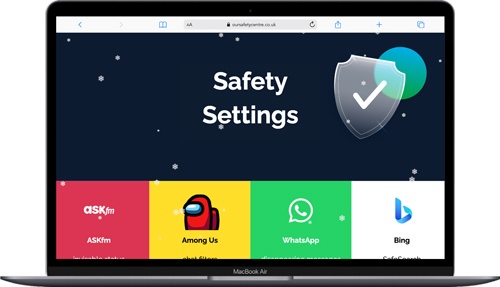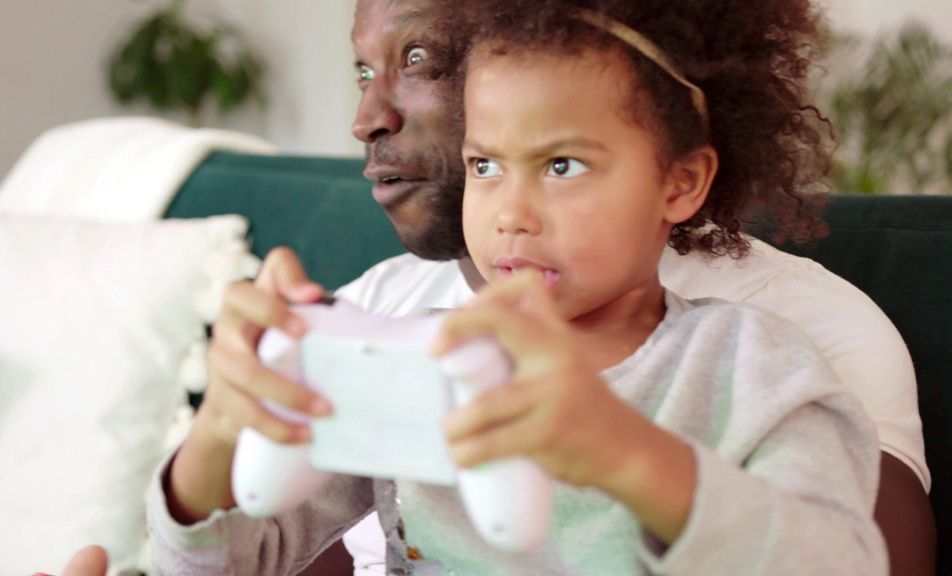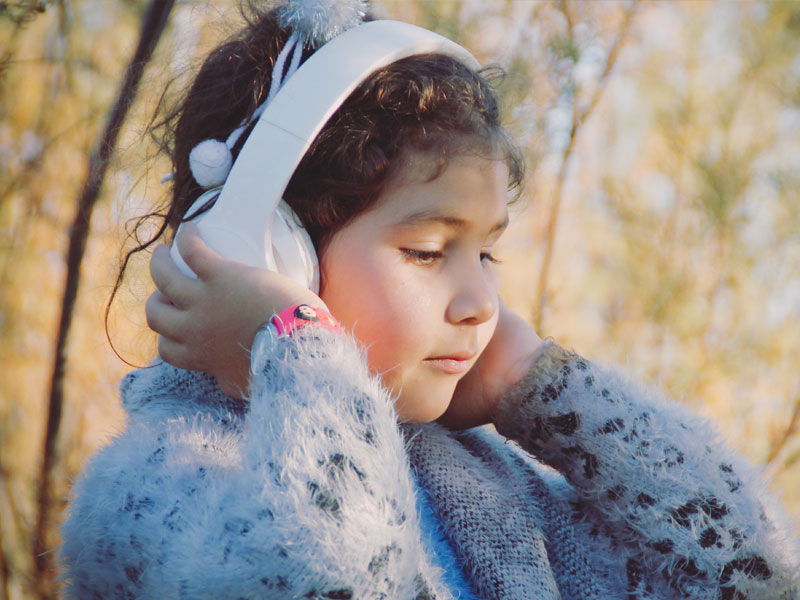Talk it through
Conversations with your children are key to keeping them safer online. Discuss everything from safety settings to social media to cyber security together.
Remember, it’s not a tick box exercise to get over and done with! These initial conversations are just the beginning. Keep online safeguarding and device safety regular and ongoing topics of conversation in your household.

Review Age Ratings
Follow PEGI age ratings when deciding about the suitability of games for the child or young person in your care.
Bear in mind that you know your child best; if a game doesn’t seem like it would suit your child, then give it a miss and find one that’s a better fit.
Learn more about PEGI ratings in our Guide to Keeping Children Safe While Gaming This Christmas.

Enable parental controls and family settings
Make sure you use the tools that are at your disposal! Check with your broadband providers, on devices, games, apps etc., for parental control and family setting options.
Don’t forget to communicate with your child or young person about any parental control settings that you’ve set up on your child’s first phone or any devices they use.
It’s important they understand why parental controls are being put in place but also that you’re not establishing a relationship of secrecy regarding device usage and the online world.
More info:

Safety Settings
Safety settings. As with the parental controls, utilise the existing features fully. It’s easy to forget about using safety settings or think, ‘I’ll do this later’ but right now is much better than an inevitable never!
Visit our Safety Centre to learn how to use safety settings on the most popular platforms and games.

Be kind
Talk to your child about the important of being kind and mindful of other people’s feelings online. Make sure your child knows it’s important to report bullying behaviour, even when it’s directed at other people.
Downloadable Resources:

Money matters
Understanding the value of money is an important life lesson for every child. It’s just as essential for that understanding to be applied to the online world too! Loot boxes, game prices, streaming services, film downloads, in-game currencies and DLC (extra downloadable content) are just a few of the financial elements that your child will encounter online.
Teach them about the real-world value and the importance of asking permission before making purchases (and if your bank account details are linked, make sure to set up a PIN!)
Helpful resources:
- Learn about gambling in gaming, including loot boxes and persuasive design.
- Read our guide to Safe Streaming on services such as Netflix, Disney Plus and Prime Video.

Passwords and passcodes
As well as using PINs to protect your pay from being spent on Minecraft skins, set up passwords and passcodes on devices. You might want to use a code to protect your child from downloading a game without your permission or to set screen time schedules. There’s a range of restrictions you can choose from, depending on the device.
Introduce your child to password safety with our special Christmas Password Pack which includes fun colouring in activity sheets.
Watch our award-winning animated video to help teach the children in your care about why passwords are important.
Time limits and breaks
Before handing over your child’s first phone or new device, discuss and agree on time limits. Be firm but fair and – most importantly – realistic. Some devices will let you set this by game, app, platform, or device so you can let technology help monitor them but keep a watchful eye for yourself. Regular screen breaks are important, too.
P.S. Parents, remember that we need to be good roles model and follow the screen time rules too!
Sit down together and use the fun Family Screen Time Pack to reflect on how you use screen time as a family.

Online friendship
Young people making new friends online is not unusual in today’s digital world. Social media platforms, gaming consoles and plenty of apps can all have elements of social interactivity, whether that is with people the user adds themselves or strangers. It’s therefore really important that your child or young person is prepared with the knowledge needed to manage online relationships.
Talk to them about the importance of:
- keeping their personal information safe, including their location and school name
- never sharing inappropriate photos
- always come to you if an adult interacts with them online.
It is estimated that at any one time approximately 750,000 individuals are looking to connect with children online for sexual purposes, including grooming for sex.
Learn more about virtual friendships and why young people turn to the online world to make friends.

Personal Information
It is all too easy to overshare or accidentally share details about our lives online. We can unintentionally give away our addresses via a letter in the background of a photo or disclose details about where a child goes to school in a ‘proud parent’ post about their latest academic achievement.
Talk to your child about what is and what isn’t appropriate to share online. As a family, get into the habit of always double checking what you’re about to post or share online to make sure it isn’t giving away personal information. Check the settings for who can view posts and interact with your child on games and apps they want to play. Always choose the most private options available.
Find out more about protecting your photos online.
Don’t forget to visit our Safety Centre to find out more about safety settings, plus learn how to block and report on the most popular apps and platforms.
Learn what to do if a child or young person in your care shares self-generated sexual abuse materials.
Watch our short video guide below on what you shouldn’t share online.
Filter safe search
When setting up a new phone or device for your child, make sure you’ve turned safe search on wherever possible. Not only do search engines like Google have this option but your internet provider itself will likely have this feature.
Learn how to set up Google Safe Search.

Last but not least – stay alert!
Safeguarding your child online is not a one-off task. Check in regularly and keep an eye out for changes in behaviour, including secrecy or obsessive behaviour linked to their device. And remember, you’re aiming for an open, parental relationship, not a surveillance state!




















